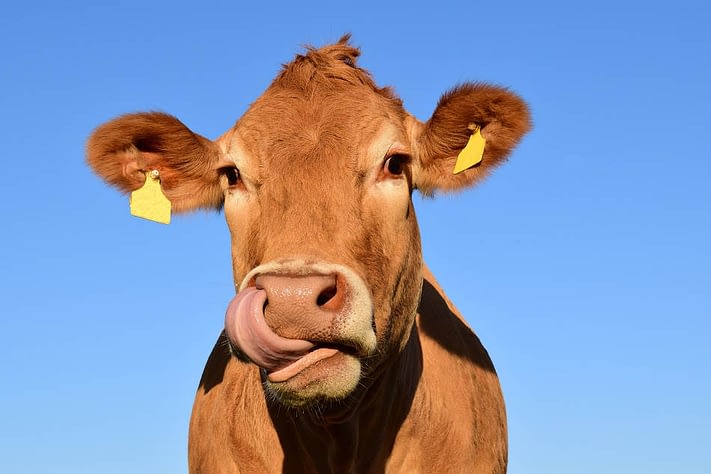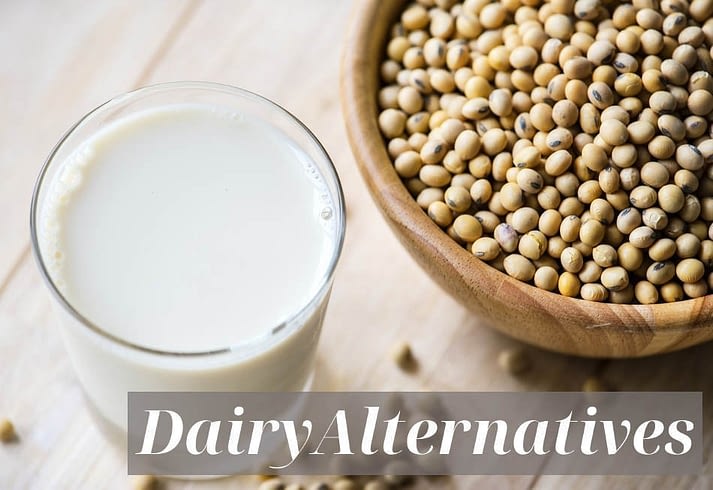What Kind of Milk For a 3 Year Old?

I was in the grocery store the other day and it shocked me to see the vast wall of new types of milk available today. The choice seemed overwhelming. I was trying to choose a nutritious drink for the kids and I found myself completely lost for choice about what would be best for them. Whole milk, 1%, 2%, skim, Rice, soy, hemp, cashew, almond, tiger nut. The list could go on. So what kind of milk should I give to a 3 year old?
The best kind of milk for a 3 year old is going to be a low-fat variety. Either Skim or 1% cow’s milk. That’s what the USDA advises. You may also want to try dairy alternatives like plant based milks. If you do decide to give them a try just make sure your toddler isn’t allergic to any ingredients first and then take into account their nutritional value towards your toddler’s diet. Plant based milks vary in their nutritional composition compared to cow’s milk.
I know it can be so confusing when your 3 year old is growing up to know what is right to do. You tend to get advice from everyone. I would suggest to do your own research or trust reputable sources for advice (Like the USDA as mentioned above). If in doubt consult a child nutritionist. I have donethe research for you into the recommendations, I found out some very surprising things, read on to find out.

WHY SHOULD YOUR 3 YEAR OLD DRINK MILK?
Why are we told to always drink milk? Well because it has a host of nutritional value for both us and our 3 year olds. What is in milk that makes it so special? We all know we should drink it but few people know what the benefits for your child are.
- Calcium: The one everyone knows, yes, but it’s still very important as milk provides a large part of your 3 year olds calcium requirements if it is consumed in the right amount. (See below for the recommended daily servings for your 3 year old).
- Vitamin D: Maybe a lesser known benefit of milk than calcium but no less important. Sometimes the recommended servings of milk per day might not fulfill your 3 year olds need for vitamin D, so it’s best to consult your doctor on this one. They might even prescribe a vitamin D supplement.
- Vitamin A: is important for growth and development. It also helps your immune system and is great for your vision.
- Protein: Cow’s milk has a lot of protein, which is the building block for your child’s growth. Getting enough protein is important for their development, if they are eating a well balanced diet, then this shouldn’t be an issue as protein can come from many different sources.
Milk has plenty of other benefits to a healthy diet but those are the most important ones to remember. Cow’s milk isn’t the only option though, there are plenty of daily alternatives available and lots of reasons why you might choose them as an option.

YOU CAN TRY DAIRY ALTERNATIVES
Alternatives to milk have never been more popular, they seem like a great option. Allergy or intolerance to cows milk can be a big reason to switch your child onto an alternative. The variety in the different flavors is amazing and there are quite a few that I like myself. Are they right to give a 3 year old? They can definitely be part of a balanced diet for a 3 year old. I will list a few of my favorites below with the information you may need to make a good decision about which one is best for your 3 year old.
- Soy milk: The most popular alternative drink to milk. Nutritious and great tasting. A great alternative for 3 year olds who are lactose intolerant. Big named brands produce it like Alpro. Please be careful as some children are allergic to soy, so you may want to be careful at first. If your child is allergic to soy, don’t worry as most children grow out of this when they reach adulthood.
- Almond milk: Has a great taste and is relatively easy to get hold of. It also has vitamins D and A which are important and are also found in cows milk. It lacks the protein and calcium content of cow’s milk though. Protein sources can be varied in a 3 year olds diet so that isn’t such a big worry, but calcium sources are harder to find. Some almond milk manufacturers add calcium into their milk, so this might be a good compromise.
- Rice milk: This milk is the one that causes the least allergies in children but it is also not very nutritious when compared to cow’s milk or any other alternatives. Some rice milk has nutrients added. For this reason, I think that rice milk isn’t to be used as anything more than a supplement to your 3 year old’s diet.
- Hemp milk: This milk is great in terms of nutritional value. It has lots to offer and good fats too. The only issue you might come across with this milk is that it’s a bit harder to find. It’s not quite as popular as the others on this list. Another positive of this milk is that it is widely tolerated in terms of allergies.
- Coconut milk: Tastes amazing and has the fat content but unfortunately offers little else in the way of nutrition. Nice as a treat in their diet but provides little else.
HOW MUCH MILK IS TOO MUCH FOR A 3 YEAR OLD?
So how much milk does your 3 year old need in their diet? Well, it may come as a surprise but your 3 year old actually doesn’t need any milk in their diet. By the time they are 3 they have grown out of the need for milk as a food source. You can still give them milk. The USDA suggests around 2-3 servings a day of milk.
There is such a thing as too much milk. Milk is low in iron, and iron is an important nutrient for the development of your 3 year old. What can happen is that by drinking cow’s milk, your child can fill up and eat less iron rich foods. This problem is then made worse by the fact that milk decreases the absorption of iron and it can also irritate the lining of their stomach, causing them to lose small amounts of blood. This can all lead to your 3 year old being deficient in iron, so it’s worth considering. Use milk as part of a balanced diet in the amounts suggested by the UDSA which we listed above.
THE CALORIES IN MILK MIGHT SURPRISE YOU
Milk has a lot of calories in it, it helps baby calves grow into very big cows / bulls. It’s worth noting just how many calories your 3 year old is taking in through milk and other dairy products to make sure they aren’t over doing it.
The problem of overweight kids here in the US is real and a good diet starts young. The reason I want to highlight the calorie differences is to make you think twice about giving your 3 year old whole milk, I know it’s popular to do that and it’s a good idea for younger children but once your child is 3, we need to look at the alternatives. Since it is no longer needed as a large part of their diet.
- 8 Fl oz (236ml) of Whole milk has: 150 calories and 8 grams of fat.
- 8 Fl oz (236ml) of 2% milk has: 120 calories and 4.5 grams of fat.
- 8 Fl oz (236ml) of 1% milk has: 100 calories and 2.5 grams of fat.
- 8 Fl oz (236ml) of Skim milk has: 80 calories and 0 grams of fat.
- 8 Fl oz (236ml) of Soy milk has: 128 calories and 4 grams of fat.
- 8 Fl oz (236ml) of Almond milk has: 30 calories and 2.6 grams of fat.
- 8 Fl oz (236ml) of Rice milk has: 113 calories and 2.3 grams of fat.
- 8 Fl oz (236ml) of Hemp milk has: 101 calories and 6.8 grams of fat.
- 8 Fl oz (236ml) of Coconut milk has: 45 calories and 4.5 grams of fat.
DOES MY 3 YEAR OLD HAVE A MILK ALLERGY?
If you find out your 3 year old has a milk allergy then they shouldn’t have any food or products with dairy content. It’s a serious issue as children who are allergic to the proteins in milk can have severe reactions, such as coughing, wheezing, itching, diarrhea or even anaphylaxis.
If your child does have a milk allergy then don’t worry as you can find many great dairy alternatives, like the ones we listed above. Just be careful to check that they aren’t allergic to any of these either. Your 3 year old could grow out of a milk allergy when they get older.
More commonly found than an allergy to milk is an intolerance. This can mean that your 3 year old can eat milk but the might get gas, diarrhea, nausea and stomach pain. The amount of dairy products needed to affect your 3 year old in this way varies from child to child. Intolerance doesn’t mean they have an allergy to the proteins in the milk but the fact that they have problems digesting the sugar Lactose found in milk. Thankfully, there are many dairy alternatives available for them to try.

Leave a Reply